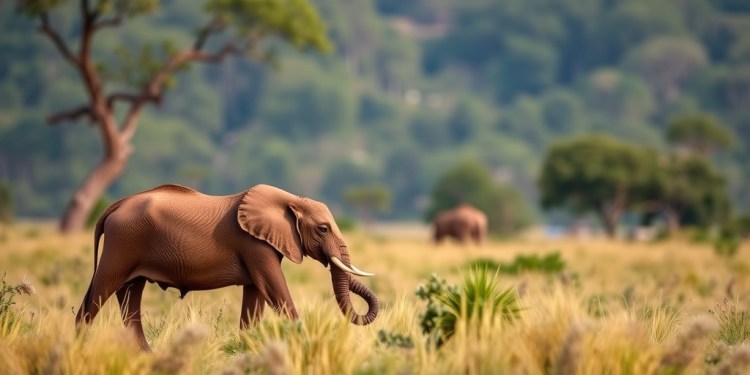A groundbreaking initiative by a research team at the University of Oxford’s Environmental Change Institute is set to revolutionize the way wildlife is reported in online media. This pioneering project seeks to enhance the identification of wildlife mentions in digital news, thereby empowering conservationists to allocate their resources more effectively. Given the vital role that online media plays in shaping public perceptions of wildlife, this endeavor could have a substantial impact on conservation strategies worldwide.
The current methods for identifying wildlife-related content often rely on keyword searches that can lead to serious misclassifications. For instance, an article discussing the performance of the Toronto Blue Jays baseball team may be erroneously categorized as wildlife-related due to the term “Jays” appearing in the title. This misclassification not only hampers effective conservation research but also leads to the dissemination of misinformation about wildlife and its conservation status. The project, therefore, aims to develop a machine-learning filtering tool that can discern genuine wildlife articles from unrelated content with greater accuracy.
At the helm of this innovative project is Dr. Diogo Veríssimo, who recognizes the importance of understanding public sentiment toward wildlife. According to Dr. Veríssimo, effective conservation depends heavily on gauging public interest and support for wildlife protection. He emphasizes that while online media is a treasure trove of public opinion, the data must be extracted accurately to provide meaningful insights. This is precisely where artificial intelligence (AI) can be leveraged to create a far more nuanced understanding of wildlife discussions in the media landscape.
The team’s approach involves training a machine learning model using human-classified data to enhance the tool’s efficacy in identifying wildlife-focused articles. By aligning the outputs of the AI with human insights, researchers aim to achieve an optimal balance that allows for swift and precise categorization of wildlife-related news. This technological advancement could significantly reduce instances of misinformation and misinterpretation that currently plagues wildlife reporting.
To enrich this groundbreaking research, the team is actively calling for volunteers to contribute to the creation of a ‘gold standard’ dataset. Volunteers will be tasked with reviewing and accurately classifying article titles to determine their relevance to wildlife. This ground-truth data is crucial for training the AI model and enhancing its accuracy in classification tasks. Dr. Veríssimo has extended an invitation to individuals from diverse backgrounds to participate in this venture, highlighting that even small contributions can have a far-reaching impact on conservation research.
The project, affectionately dubbed the ‘Nature SPAM Filter,’ has already attracted significant attention, with nearly 3,000 volunteers participating and classifying close to 2 million articles within a matter of weeks. This remarkable achievement underscores the collective power of community-driven research, demonstrating how individuals can rally together for a greater cause. By engaging the public in this initiative, the project fosters a sense of shared responsibility toward wildlife conservation.
The implications of this research extend beyond mere data collection; they touch upon the heart of effective conservation strategies. Online media serves as a barometer for public sentiment, and understanding this sentiment can lead to more effective measures for wildlife protection. When citizens are informed about wildlife issues, they are more likely to support conservation initiatives, thereby contributing to the overall well-being of biodiversity on our planet.
In addition to developing an accurate filtering tool, the team at the University of Oxford intends to disseminate their findings by publishing an open-access research paper. This commitment to transparency is aimed at ensuring that the tool is not only effective but also accessible to researchers and conservationists around the world. By sharing their methodologies and results, the Oxford team hopes to inspire further advancements in the field of media-based conservation research.
As the project progresses, it seeks to address several crucial questions regarding wildlife conservation and public engagement. Can AI accurately capture shifts in public opinion about wildlife? How does media representation influence people’s attitudes toward conservation? By answering these questions, the research aims to illuminate the dynamic interplay between media, public perception, and wildlife advocacy.
Through this initiative, the Oxford research team is not merely developing a technological solution; they are also fostering a broader dialogue about the role of technology in conservation efforts. By harnessing the power of AI, researchers can gain deeper insights into how wildlife is discussed, perceived, and ultimately protected in our society. The intersection of technology and conservation presents a unique opportunity to reshape how we approach wildlife issues in a rapidly changing digital landscape.
In summary, the University of Oxford’s pioneering project to create an advanced AI tool for filtering wildlife mentions in online media represents a significant leap forward in conservation research. By combining the capabilities of machine learning with the insights of human volunteers, the initiative aims to create a robust system that enhances the accuracy and reliability of wildlife reporting. As nearly 3,000 volunteers have already shown tremendous support, it is clear that the community is ready to collaborate in this vital cause to protect the wildlife that we hold dear.
This open invitation to get involved is not just about contributing to a research project; it signifies the collective effort to safeguard our planet’s biodiversity. The Nature SPAM Filter is poised to become an invaluable tool for conservationists and researchers alike, laying the groundwork for a future where wildlife conservation is informed by accurate and insightful data. Together, we can cultivate a culture of awareness and responsibility that ultimately benefits the planet and its myriad forms of life.
Subject of Research: Development of AI Tool for Wildlife Mentions in Media
Article Title: Oxford Developing New AI Tool to Improve Wildlife Mentions in Online Media
News Publication Date: October 2023
Web References: Zooniverse Project
References:
Image Credits:
Keywords
Tags: accurate wildlife content classificationconservation resource allocationdigital tools for conservationenhancing wildlife media coverageenvironmental change initiativesinnovative conservation strategiesmachine learning for wildlife reportingmisinformation in wildlife reportingOxford AI wildlife conservationpublic perception of wildlifeUniversity of Oxford conservation researchwildlife identification technology





